by Ken Lain, the mountain Gardener
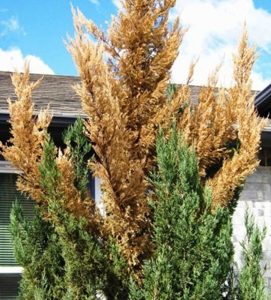
You’ve done your homework by assessing your yard and using appropriate information to choose just the right trees for your landscape. You’ve had Watters Garden Center plant them in the proper way, and have worked hard to water, prune, and fertilize each one. However, just like the gardeners who care for them, trees can become sick. Here are some things to look for when assessing whether or not your tree is healthy:
Only One Central Leader (For Most Trees) – Most landscape trees should be pruned to have only one central leader. This adds strength and stability to the tree’s structure, as well as create a straight appearance. If there is more than one leader, it may eventually cause the tree to split in two.
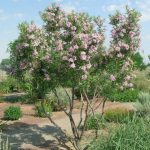 Exceptions include:
Exceptions include:
*Fruit trees: peach, nectarine, cherry, and plum, among others.
*Trees that naturally grow with several trunks, each branch coming from the base, yet having only one central leader. Some examples are Desert Willow, Flame Maple, and Chaste trees.
*Topiary and bonsai shaped forms, including espaliered trees.
Evidence of Yearly Growth – Trees produce new growth yearly on their trunks and their branches. To see how much growth has occurred in the past year, check the distance between this year’s buds and last year’s. The average annual increases vary by tree species, so learn what increases you should expect. A tree with no signs of yearly growth may be in trouble.
Dead and Broken Branches – Prune away dead and broken branches as soon as you see them. Dead limbs welcome insects and diseases prone to damage your landscape.
Test for dead branches by scraping the branch with your thumbnail. Living branches will show green underneath. Also, test branches by gently bending them. Living branches will be supple and bend easily. If the limb is dead, it will snap in two.
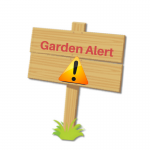
GARDEN ALERT! Leyland Cypress canker ( Seiridium Canke) will kill every Leyland Cypress in Yavapai County within 5 years, and there’s nothing we can do.
Good News – It only affects the Leyland variety, and nothing else.
We are trying desperately to find a cure, but this is like the middle-ages’ ‘Black Death’ of trees.
We are finding that Natural Guard HuMic does help increase an infected tree’s overall color, but to date, we have no cure for this particular canker disease. 🙁
If your cypress is yellowing on the inside, oozing from under its bark, or has tips dying out, your trees have canker. Keeping plants healthy is the best defense against all diseases. With 7-4-4 All Purpose Food and a deep irrigation twice per month, trees will maintain the healthy profiles to best withstand disease.
<> <> <> <> <>
Trunks with Peeling Bark – Except for certain trees like birch, eucalyptus, and paperbark maples, a tree’s bark should not be loose or peeling away from the wood underneath.
There should not be fungi growing on the trunk. Be careful when using garden equipment around trees, as damage to the bark can leave an open wound where insects and diseases can willfully attack. There should not be large cracks or holes in the bark. Observe pinholes in the bark of pine trees, the sure tale sign of bark beetle attacks.
Bare Patches and Dead branches are BAD – If you have an evergreen tree, watch for sections without leaves year-round. Don’t worry about deciduous trees until the leaves have appeared in the spring. Common causes of bare patches include:
*Nutrients and water not reaching those branches, or that section of the tree.
*Animals, like deer and porcupines, eating the leaves.
*Improper pruning practices.
*Pesticide or weed killer damage.
*Insects and diseases.
Stop the Wilt – When a tree is stressed, a universal sign is wilting. The leaves and stems will lose their rigidness and begin to droop. Some of the causes include:
*Lack of water
*Over-watering, whose symptoms look exactly like those of under-watering except that the leaves yellow on the inside and bottom of the tree.
*Too much or too little sun.
*Over-fertilized, especially with chemical fertilizers
*Diseases
*Root-bound
Suitable Leaf Color, Shape, and Size – Leaves are useful indicators of poor tree health. Make sure leaves are the right color for the season. Unless the tree naturally has yellow or variegated leaves, be especially wary if they turn yellow. They should not be stunted or irregularly-shaped. These are signs of nutrient deficiencies, insect damage, watering problems, pesticide damage, and/or diseases.
Bad Insects or Diseases – Other causes of poor tree health include insects and diseases. Some warning signs to look for are:
*Insects visible on the tree.
*Lack of fruit or flowers.
*Distortions in leaf size, color, or shape.
*Holes in bark, branches, or leaves.
*Growths or nodules on the limbs.
*Oozing sap – especially on elms and cottonwoods.
*Decreasing in growth rate
*Wilting
If unsure how to treat a diseased tree please visit Watters Garden Center right away for potential cures. Don’t wait. Summer is when tree diseases and insect populations grow rapidly and more readily kill trees.
All trees benefit from feeding with Watters 7-4-4 All Purpose Plant Food in July, but if you suspect you have a sick tree it is essential to also spread Natural Guards’ ‘HuMic’ under the dripline.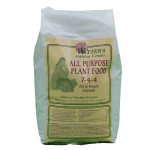
All Purpose Plant Food will increase your trees’ green color, branch sturdiness, and leaf thickness. This Summer feeding also sets the stage for better color when Autumn comes around.
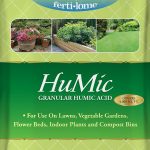 HuMic is a granular product to spread at the base of trees. It acts much like an antibiotic for plants. It stimulates deeper root growth and plant hardiness as trees interact with this nutritious additive.
HuMic is a granular product to spread at the base of trees. It acts much like an antibiotic for plants. It stimulates deeper root growth and plant hardiness as trees interact with this nutritious additive.

